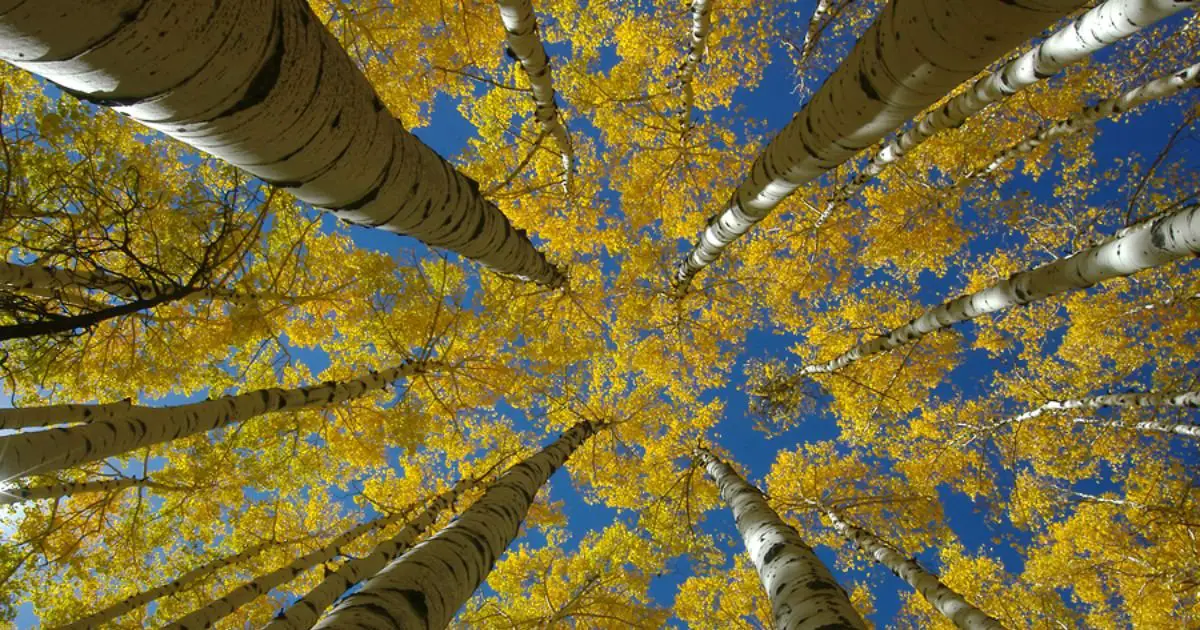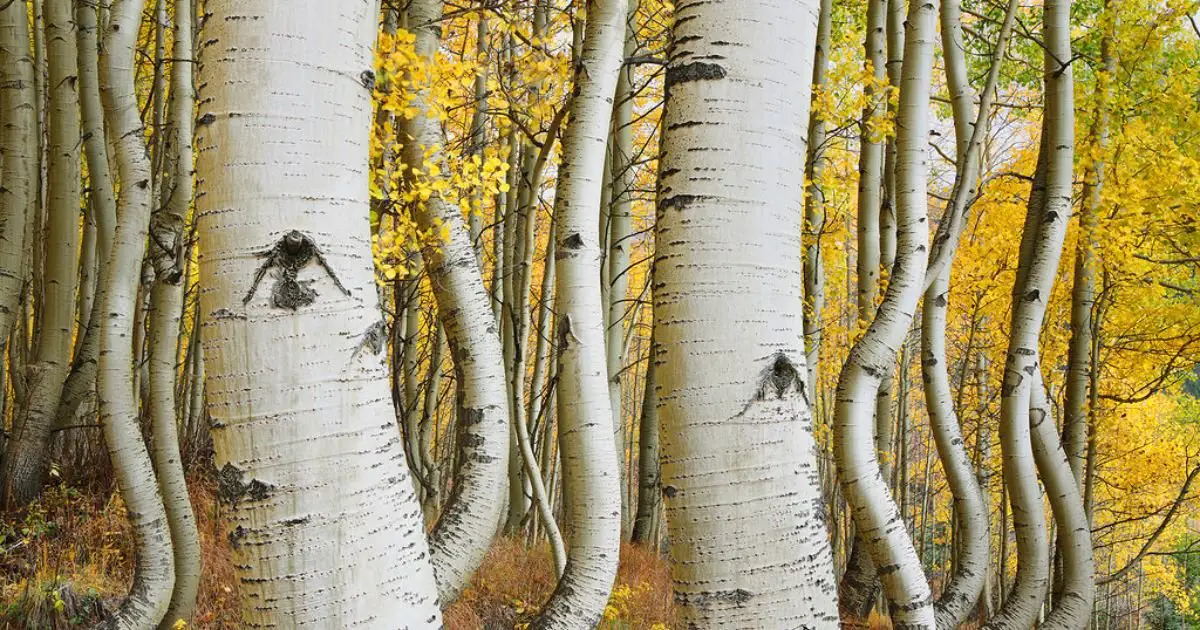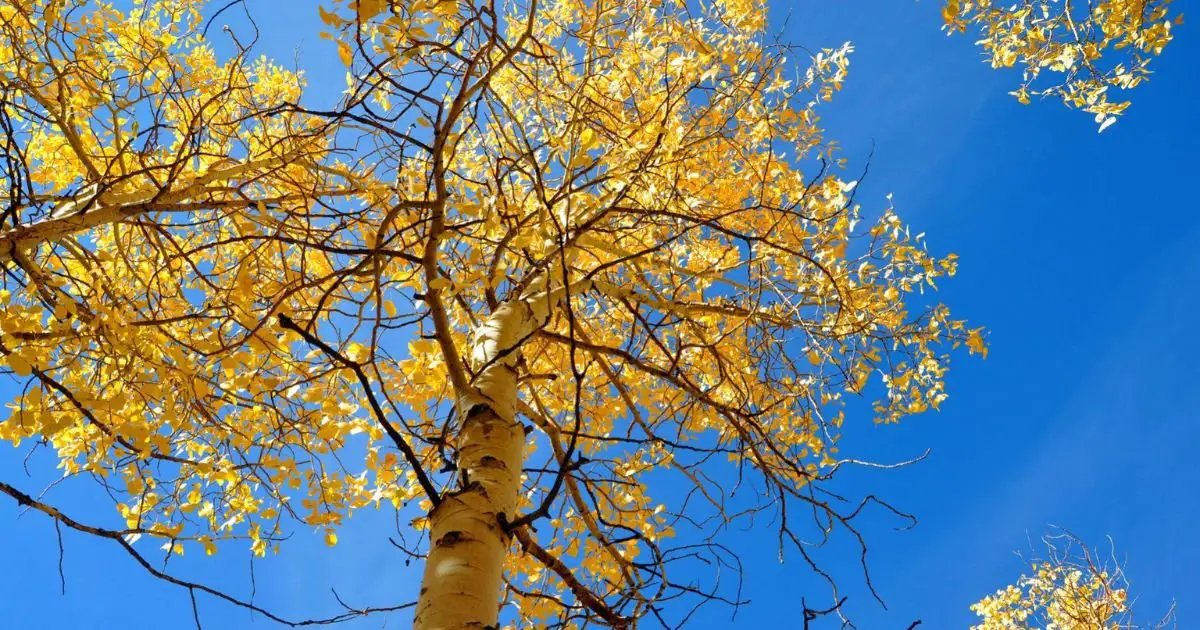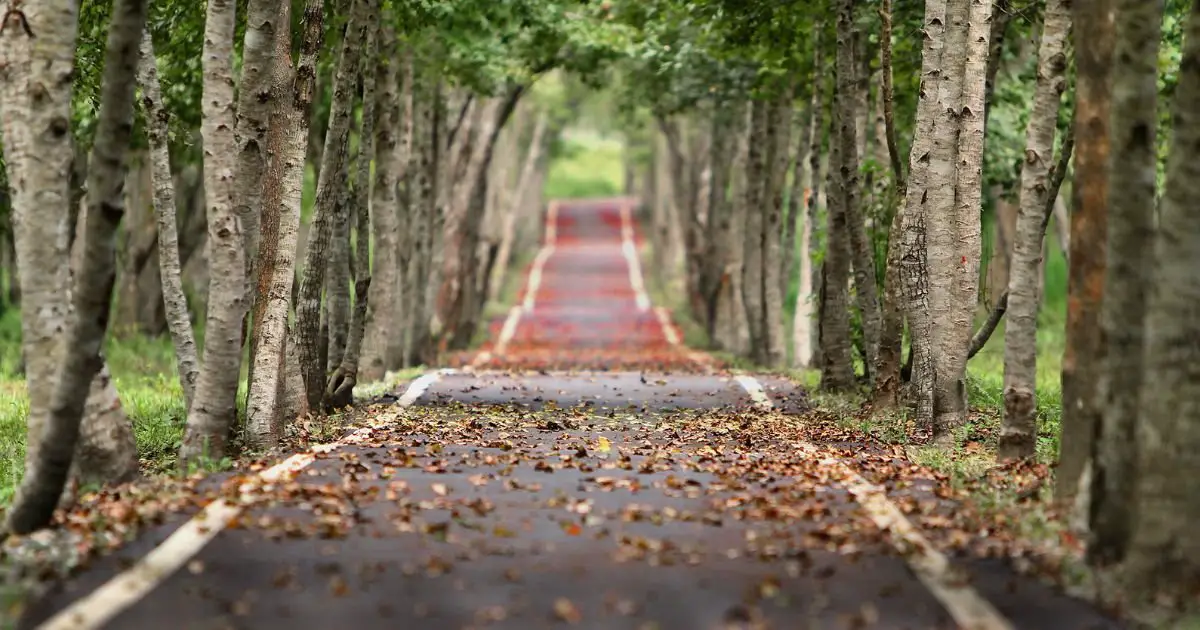Aspen Tree Photography is a particular subject that covers photography of Aspen trees. It reveals the differences and attractions of aspens, focusing on the fact that they are the most photogenic trees. These trees must be captured because of how impressive they look and the beauty of shooting them sans the leaves during the different seasons of the year. It will contain ways, suggestions, and the importance of photographing aspen trees, enlightening readers about how to find and value such wonders.
[ez-toc]
Understanding Aspen Trees

The trees are limbed with white bodies of mature bark and leaves that sparkle as they sway in the breeze. These trees undergo remarkable transformations throughout the seasons. Their leaves are bright green in spring and summer and yellow in autumn. The trees are barren in winter, and the branches are outlined against the snow cover. The best time to capture the Aspen trees is during the autumn.
When the trees are ablaze with golden colors, or during the budding season in spring, when the new foliage starts to develop, considering that this provides a vibrant and constantly changing spectacle.
Essential Gear for Aspen Tree Photography

Photography of aspen trees requires special equipment because of their splendid appearance. Another important type of recommended camera is a DSLR or mirrorless model with the highest resolution and dynamic range, such as Canon EOS R5, Sony A7R IV, etc. These cameras offer the kind of quality that standards are required in such a specialization as landscape photography.
Ideal lenses comprise wide angles, such as the Canon EF 16-35mm f/2. 8L III or the Sony FE 16-35mm f/2. 8 GM to paint the great large groves and telephoto lenses like Nikon AF-S 70-200mm f/2. 8E FL ED VR is used for close-ups of the trees’ trunks and foliage.
Tripods are very important in this kind of shooting, especially in low-light situations or with a slow shutter speed to capture motion in leaves. Other accessories include the polarizer to boost colors and cut down reflections, the neutral density filters for controlling light, and the remote shutter to avoid movement during shots with a slow shutter speed. These tools make the pictures clear and bright of calm aspen scenery.
Techniques for Capturing Stunning Aspen Tree Photos
Aspen trees are often a photographer’s dream, but getting good photographs of the tree entails more than just a camera and great scenery. Location timing is very important, shooting in the early morning or late afternoon when the light is warm and soft. Hues also have a great function in a given picture, performing leading lines like roads or sequences of trees.
Experiment with different perspectives: the broad landscape shots to make the scale of the forest apparent and the detail shots to better show the grain and surface of the bark and foliage. Hold a polarizing filter to diminish the glare and bring out brighter colors. Finally, staying steady is important, so a low-light tripod is advised whenever you are photographing in this manner.
Choosing the Right Time of Day
There is nothing better than selecting the most appropriate time of the day to photograph aspen trees. It is favorable to take aspen tree photographs during the golden and blue hours since they provide ideal lighting. Dawn and twilight have a soft, warm light that brings out the golden color in the aspen leaves, and the long shadows give the photos a much-needed depth. In and out of these moments, sunlight seeps into the trees, lighting their leaves like sparkly, fairy-like accessories.
The blue hour can be photographed before dawn and after dusk. The light during this time can be significantly cooler and softer than during the other hours of the day, adding a magical and calm note to the photographs. This is a perfect time to take photos of the white bark of the aspen trees contrasting with the gradually turning sky.
Organizing shoots according to these hours and making necessary changes to camera settings for these lighting conditions is advised. One must use a tripod when taking pictures during these hours, as the exposures could be long.
Composition Tips
In aspen tree photography, the rule of thirds can be used to position trees or any focal points to ensure proper alignment. Keep the dominant lines, including paths or streams, leading into the scene to focus the viewer’s attention. Take pictures of frames with some branches or leaves around the subject to create context and depth. These techniques bring out the true beauty of aspen groves and the peaceful environment, thus making your photos more interesting.
Focusing on Details
Aspen tree photography is most effective when the emphasis is on minutiae. Holes and ordinary pored structures are taken in detail on the leaves, focusing on the veins and colors of the leaves. Capturing the Barks brings out the white structures and black-textured eye shapes. The macro lensing brings out these details, making the tree look natural. It conveys richness and detail, which leaves the viewer aesthetically stimulated and introduces an element of closeness to the images of aspen trees.
Post-Processing Tips for Aspen Tree Photography

When it comes to enhancing aspen tree pictures, post-processing is important. The white balance must first be adjusted to achieve the vibrant colours of the leaves and bark. To bring out the nuances of the leaves and the texture of the bark, contrast and clarity must be used. To highlight the fresh tree leaves on the highlights cards, choose to modify the colour of the yellow and green hues. With increased sharpness, fine features can be emphasized, and the backdrop and sky can be made smoother with noise reduction. Gradient filters should also effectively control the sky and foreground exposure. Finally, a small vignette could be added to highlight the main subject of the chosen image.
Basic Adjustments
For aspen tree photography, foundational changes, including exposure, contrast, and white balance, are vital. Proper exposure is necessary to capture details in the highlight and shadow, and contrast is changed to capture details in the textural or bleak part. The correct white balance enables the natural colours and does not give the aspen leaves and bark a yellow tint that interferes with reality.
Enhancing Colors
In aspen tree photography, colour amplification raises the vibrant yellows and greens to the appropriate level. A slight modification of saturation and contrast could enhance the foliage area, which would be the stunning colors of fall foliage on aspen trees. This technique assures that the final images are as beautiful as the trees these species are popular for.
Sharpening and Noise Reduction
Sharpening increases the details in an aspen tree photograph, especially the texture of the leaves and the tree itself. The technique should be selective, avoiding oversharpening, as this poses a great danger of enhancing the noise. Sound minimization often sharpens grain and removes the original grain, particularly during night vision. Such adjustments are balanced to get clear and sharp images that depict the raw nature of the aspen tree environment.
Locations for Aspen Tree Photography

Aspen tree photography is particularly popular in regions where these trees grow and where colour changes during different seasons are most affected. Consider the following spots:
Colorado’s Rocky Mountains: Places such as Aspen, Crested Butte, and the Rockies offer ideal aspen forests, especially when they are orange in the fall.
About Utah: The Fishlake National Forest is home to a giant aspen tree colony called the Pando.
Sierra Nevada, California: This involves regions such as the Sierra East and the Yosemite National Park.
They all offer different points of view and colourful scenery in autumn regarding aspen tree photography.
Best Spots in North America
In North America, several renowned locations are perfect for aspen tree photography: In North America, several renowned locations are perfect for aspen tree photography:
Rocky Mountain National Park: Colorado A beautiful area with aspen trees that turn colours in the fall.
Crested Butte: Colorado, Boasts large hiking terrain Most of the trees are aspen, which turns scarlet in the fall.
Fishlake National Forest, Utah: – The location of the largest/oldest aspen grove, Pando.
Yosemite National Park: California has aspen trees at different sites, such as Tuolumne Meadows.
Yellowstone National Park: Wyoming/Montana/Idaho Red forests and various geysers of varying sizes.
These places offer various and spectacular locations to portray the elegance of the aspen trees.
Hidden Gems
Some photographers searching for new views of aspen trees can find several less-known but quite picturesque and calm places. Colorado’s San Juan Mountains offer some gulch aspen spots off the beaten path that haven’t had a crowd, at least in the Silverton and Telluride areas. The Bishop Creek Canyon in the Eastern Sierra of California comprises aspen groves with beautiful autumn colours.
Utah’s Uinta Mountains have large groves of aspen trees, fewer tourists, and are scenic before and during autumn. Alberta’s Kananaskis Country is not as popular as Banff but has excellent aspen country strewn across its otherwise rough terrains. Sometimes, it is better to avoid crowded tourist attractions and look further for overlooked aspen views that can remain hidden in the wilderness.
Seasonal Recommendations
With aspen tree photos, photographers recommend the fall because the trees turn yellow and gold during this time. Autumn brings picturesque colours of trees and cool weather, while Spring prepares the ground with the lovely greenery of summer and towering snow-covered trees of winter. Different aspects of the aspen’s beauty are emphasized in other seasons, so the choice of time is based only on the desired light and shades in photographs.
Aspen Trees Season Variations Photography

The aspen trees displayed relatively great seasonal changes, making them a good subject to photograph. In spring, their young leaves are vividly green against the blue sky of the midwest USA. Summer traditions are rich and, if the climate allows, pompously green. In summer, they stand out as a rich green, but they turn into a wonderful golden color of yellows and oranges in autumn. Winter paints a rather sad picture where trees are covered with snow. Every season has a different look of aspen beauty and splendor.
Celebrating Aspen Trees in Autumn
It’s a delight to have a focused celebration with a tree like the aspen trees, especially during autumn. During fall, aspen trees give a spectacular view as they change color from green to fiery gold and bright orange. These trees have exquisite colors that stand out against the white of the barks, and the foliage brightens the whole view. With changes in the intensity of the two and how they affect each other, this season is a great time for photographers. Get information about the scenic drives and trails in popular locations such as Colorado’s Rocky Mountains or Utah’s Fishlake National Forest to capture the change of the trees throughout the season.
Aspen Tree Photos and Forest Nature Prints for Sale
Aspen tree photos and forest nature prints are a lovely and elegant means of introducing the scenic natural world into your home and office. You can find high-quality prints featuring aspen trees in various forms:
Aspen Tree Prints: This company provides pretty aspen prints, including framed or canvas prints. Other online print shops include Etsy, Society 6, Redbubble, and others.
Local Art Galleries: Local art galleries and nature stores mostly display prints from local photographers’ photographs, including aspen trees.
Photography websites 500px and Shutterstock, among others, have various aspen tree images for sale as prints.
These prints depict the beauty of aspen trees and bring a natural calmness to any house or office room.
Final words
Photography of aspen trees focuses on their details, especially the changing colors in fall and the most subtle structures of their bark and foliage. Some of the aspects regulating it are proper clothing and equipment, keeping track of the small things, and selecting the proper places for the photographs you want to take. Wilderness like the Colorado Rocky Mountains or Utah’s Fishlake National Forest are promising places to cover. Take the ride, as that is how one meets other enthusiasts, and share your aspen tree pictures and appearances here on the photography blog.
Read More
High Desert Photography: 10 Tips for Perfect Shots





